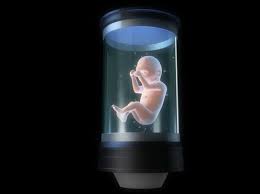
Breaking News
 Selling Us Rope: Palantir Is Raking In Billions From Washington
Selling Us Rope: Palantir Is Raking In Billions From Washington
 Tyson Foods Confirms Protein Switching Underway Amid Record High Beef Prices
Tyson Foods Confirms Protein Switching Underway Amid Record High Beef Prices
 Holy SH*T! Sex Offender Can't Adopt Kids--So He Bought One Instead? | Redacted w Clayton Morris
Holy SH*T! Sex Offender Can't Adopt Kids--So He Bought One Instead? | Redacted w Clayton Morris
Top Tech News
 'Robot skin' beats human reflexes, transforms grip with fabric-powered touch
'Robot skin' beats human reflexes, transforms grip with fabric-powered touch
 World's first nuclear fusion plant being built in US to power Microsoft data centers
World's first nuclear fusion plant being built in US to power Microsoft data centers
 The mitochondria are more than just the "powerhouse of the cell" – they initiate immune...
The mitochondria are more than just the "powerhouse of the cell" – they initiate immune...
 Historic Aviation Engine Advance to Unlock Hypersonic Mach 10 Planes
Historic Aviation Engine Advance to Unlock Hypersonic Mach 10 Planes
 OpenAI CEO Sam Altman Pitches Eyeball-Scanning World ID to Bankers
OpenAI CEO Sam Altman Pitches Eyeball-Scanning World ID to Bankers
 New 3D-printed titanium alloy is stronger and cheaper than ever before
New 3D-printed titanium alloy is stronger and cheaper than ever before
 What is Unitree's new $6,000 humanoid robot good for?
What is Unitree's new $6,000 humanoid robot good for?
 "No CGI, No AI, Pure Engineering": Watch Raw Footage Of 'Star Wars'-Style Speeder
"No CGI, No AI, Pure Engineering": Watch Raw Footage Of 'Star Wars'-Style Speeder
 NASA's X-59 'quiet' supersonic jet rolls out for its 1st test drive (video)
NASA's X-59 'quiet' supersonic jet rolls out for its 1st test drive (video)
 Hypersonic SABRE engine reignited in Invictus Mach 5 spaceplane
Hypersonic SABRE engine reignited in Invictus Mach 5 spaceplane
Scientists: Artificial Wombs Could Replace Women

The idea of growing babies outside the body has inspired novels and movies for decades.
Now, research groups around the world are exploring the possibility of artificial gestation. For instance, one group successfully grew a lamb in an artificial womb for four weeks. Australian researchers have also experimented with artificial gestation for lambs and sharks.
And in recent weeks, researchers in The Netherlands have received €2.9m ($4.66m) to develop a prototype for gestating premature babies.
So it's important to consider some of the ethical issues this technology might bring.
What is an artificial womb?
Growing a baby outside the womb is known as ectogenesis (or exogenesis). And we're already using a form of it. When premature infants are transferred to humidicribs to continue their development in a neonatal unit, that's partial ectogenesis.



